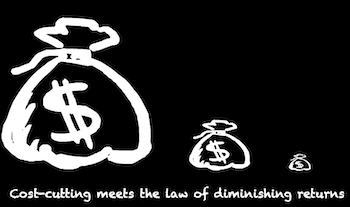What caught my eye this week.
I can’t get very het up about housing secretary Angela Rayner’s resignation on Friday, as a result of her underpaying stamp duty on a flat in Hove.
For starters, it’s pretty clear that Rayner is just the latest person to run into the buzzsaw of Britain’s ludicrously complicated tax code – even with professional help in her case – and to come out supremely chaffed by the contact.
Nothing in this sad story involving divorce, a disabled child, and divided duties across the country has the hallmarks of a grand conspiracy to dupe the taxpayer.
All the same, as a leading minister she should have got it right and she didn’t.
And honestly, after the past few years it’s refreshing to see an MP resigning in good time, rather than having to be burned out of office like a recalcitrant tumour.
This is the way our knockabout democracy used to work.
Snagging issues
Perhaps as housing secretary she should have gone anyway, given Labour’s dismal showing to-date in homebuilding.
True, the creation of the Building Safety Regulator in 2022 long predates Rayner’s taking on the housing brief.
But industry voices have been warning for years that the new body was underfunded and that this was severely delaying development.
The construction sector is running at levels last seen during the pandemic – you know, when most of us weren’t even allowed out of the house. According to homebuilder Berkeley, new home starts in London are as low as in the aftermath of the financial crisis.
Sure I’m gloomy about the UK economy, but even I think it should be a better time to be building houses than during a plague or a potential depression.
Rayner must have seen similar numbers crossing her desk. I didn’t notice any urgency in response. Perhaps the next one can do better.
Homebuyer’s report
It’s notable that it’s a housing-related scandal that’s delivered this speedy resignation.
Would Rayner have faced quite the same opprobrium if she’d made a mistake on her self-assessment tax form?
Possibly not.
It’s an interesting coincidence too that Trump is currently pressuring the still-independent US Federal Reserve by firing a Fed committee member over alleged mortgage fraud.
Of course this is just the latest in his ongoing belittlement of the US institutional framework. He might have fired her for being late returning her library books if that was all his people dug up.
But mortgage fraud hits the sweet spot.
Indeed given how politically hot this potato is in the US and UK, I was surprised to also read a story in The Guardian this week that detailed the property holdings of Australian politicians.
Out of the 236 federal Australian MPs and senators who’ve disclosed their housing interests, more than half – 130 – have multiple homes, investment properties, or both.
Some have six properties! (Some have cattle ranches, but we’ll put that to one side. Fair dinkum mate.)
Australia is a vast country, and there’s lots of room for more homes. Though most of that room is in a desert and Australia has its own housing affordability crisis.
How are the Aussie lawmakers getting away with their side hustles as property tycoons? It must come down to cultural norms.
In her recent FIRE-side chat, Melbourne-based Monevator reader London a Long Time Ago told us how everyone with any money in Australia does property like we do ISAs.
I suppose that keeps any stone throwing through glasshouse windows to a minimum.
Fixer-upper
Will Rachel Reeves still go after stamp duty and other property taxes in the November Budget, given her own colleague just blew up on contact with this touchy subject?
The chancellor could spin it either way – as yet another pointer that complex property taxes are overdue reform, or as deciding to avoid complicating the situation even further given those infamously hard-working families already have enough on their plate.
Reeves should at least scotch the rumours pronto if there’s nothing doing. The uncertainty is slowing down the housing market, and the UK (and Treasury) needs all the economic growth it can get.
As for building more homes, an interesting article behind the paywall in the Financial Times this week makes the case that supply isn’t actually the problem many of us think it is. It even advocates for a wealth tax on land as a salve to a distorted market.
Personally, while I think stamp duty is a dysfunctional tax that desperately needs reform and that something must be done to slow the UK’s descent into neo-feudalism, the reality is an Englishman or woman’s home is their castle – one with barrels of explosive gunpowder in the basement.
If Reeves wants to follow Rayner out in a blaze of glory, then she only needs to light the fuse…
Have a great weekend!



